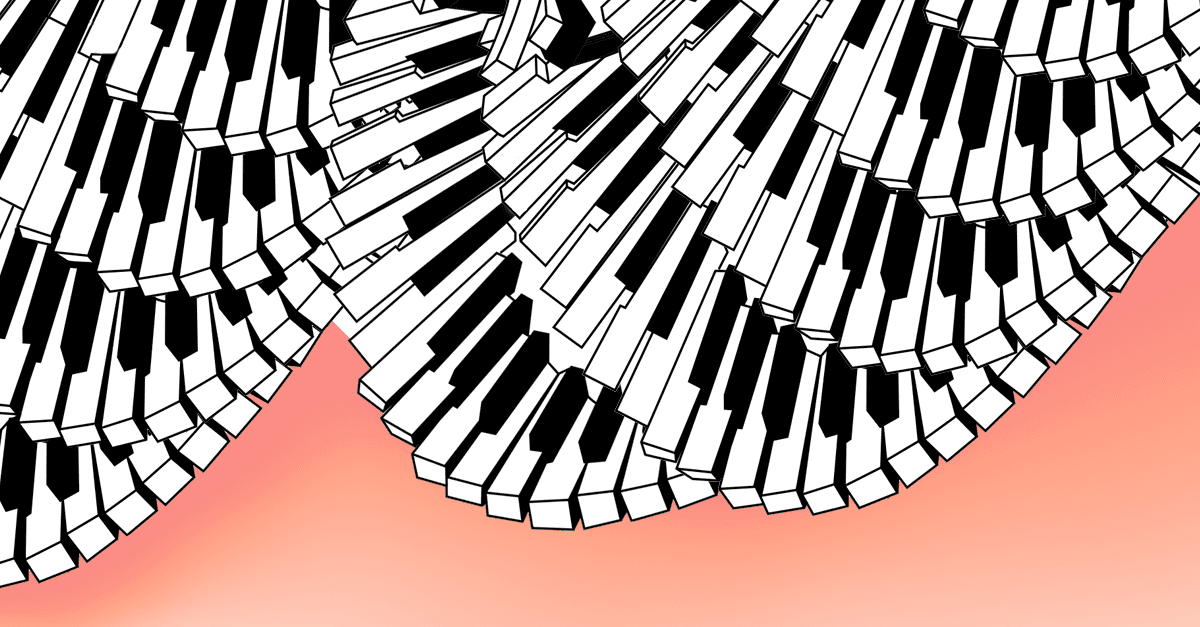The Lydian Mode: How to Use it to Write Better Songs
In movies and TV it often seems like songwriters find good ideas for songs by way of inspiration and chance, but this couldn’t be further from the truth…
Memorable chord progressions, melodies and lyrics come to songwriters when they give their ideas the space and time to develop, and use the right tools to get there.
The more compositional tools you have at your disposal, the better—and faster—you’ll be able to turn a good idea into a great song.
But with so many tools and so much music theory out there, what’s the best place to start?
Here at LANDR we name all of our mastering engines after musical modes because we know how useful they are for all musicians (just like LANDR mastering).
And there’s no better mode for adding mystery, beauty and lightness to your music that the Lydian mode.
Theory guides, production tips, new free plugins, gear guides and more—delivered weekly
Keep up with the LANDR Blog.
What is the Lydian Mode?
The Lydian mode is a musical scale that uses seven tones. It begins with three whole tones, then a semitone, followed by two whole tones and finally, ending with a semitone.
Using Lydian will help you craft chord progressions and melodies with a distinct sound that is arresting, haunting and effective.
It’s pretty easy to grasp too. Like so many other elements in music theory, learning the Lydian mode is as simple as memorizing a short pattern of whole and half-steps that are applicable in all keys on any melodic instrument
Using the Lydian mode will help you craft chord progressions and melodies with a distinct sound that is arresting, haunting and effective.
In this article I’ll teach you what Lydian is and how to use it effectively in your own songwriting. Let’s dig in!
The many musical modes
There are seven modes in music. Each one comes with its own distinct sound and pattern of Tones and Semitones.
In terms of modes, the major and minor scales most of us know and use are referred to as the Ionian and Aeolian modes. But using other modes will give you some very specific and unique results.
For example, The Locrian mode can deliver a jarring dissonance to your songwriting. So where does that leave Lydian? Well, the Lydian mode will give your songwriting a sense of levity and turn a boring composition into something lively and engaging for the listener.
How modes function in music
You might not know it yet, but modes may already be part of your process.
Modes are scales that have specific melodic characteristics. So if you’ve done any kind of songwriting you already rely on musical modes if you use major and minor scales to help construct your songs. The only difference is that scales have different names when we think of them as modes, as you’ll soon see while you’re using Lydian.
You might not know it yet, but modes may already be part of your process.
How to use the Lydian mode in your music
The Lydian mode is nearly identical to the Ionian mode (the major scale). The only difference is that Lydian raises the fourth note in the scale.
For example, if you’re in the key of F major, the fourth note in the scale would be a Bb, but in the Lydian mode it becomes a B natural. Believe it or not, all the distinct weightlessness of this mode comes from this single altered note.
To help show you how to build this mode, I’m going to use a visual representation of a keyboard as a guide, but feel free to apply everything you learn here to your instrument of choice.
The Tone and Semitone (whole and half-step) Lydian mode pattern you’ll learn here can easily transfer to an instrument like the guitar as well—one Semitone is equal to one guitar fret.
Here’s the pattern you’ll need to memorize to build the Lydian mode:
The above example shows the Lydian mode in the key of F: You’ll move up a whole-step and get G, two more whole-steps to get A and B, a half-step to get C, two more whole-steps to get D and E and with the final half-step you’ll get a final F note.
This example has no accidentals (sharps or flats), but the lydian mode built on any other note will. To test your knowledge, build this mode in other keys on your instrument. Lydian is great for building chord progressions, but it really shines when it’s used for constructing vocal and instrumental melodies. Here’s the notes that make up the Lydian mode in the key of F:
Taking the time to memorize a few simple mode note patterns will bring huge positive changes to the way you make music.
The Lydian mode in popular music
Lydian is heavily used by many film composers, but there’s plenty of clear examples in popular music as well.
In Bjork’s ethereal song “Possibly Maybe” from her 1995 album Post, the Lydian mode shows up in the intro vocal melody.
And Elliott Smith’s arresting “Waltz #1” uses the Lydian mode to give it its distinct windswept beauty throughout the entire track:
A pallet of sounds at your fingertips
Taking the time to memorize a few simple mode note patterns will bring huge positive changes to the way you make music.
Many musicians avoid learning simple music theory because it’s often viewed as intimidating or even worse, unuseful!
But learning how to understand, build and play ideas using tools like the Lydian mode is knowledge that will give you more options as a songwriter and expand your creativity beyond your current limitations.
Gear guides, tips, tutorials, inspiration and more—delivered weekly.
Keep up with the LANDR Blog.
Latest posts
